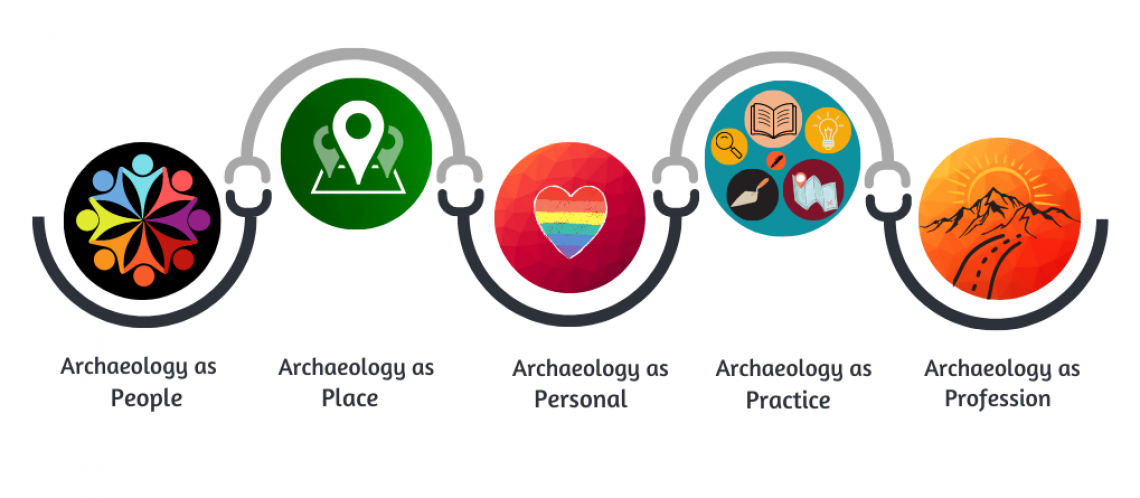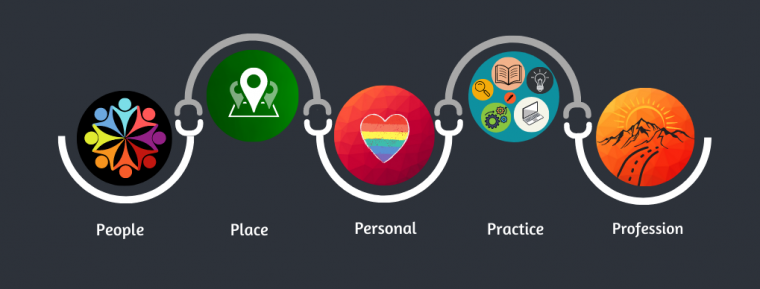Our Approach
The Linking Southwest Through Archaeology (LSWHTA) program partners with local high schools to connect students, educators, and school counselors to the field of archaeology, Southwest heritage, higher education, and potential career pathways. Through this program, Latinx and Native American/Indigenous identifying youth have the opportunity to experience and reflect on the rich cultural heritage of the Southwest.
Through overnight and day trips to National Parks, archaeology sites, museums, university labs, and participation in ongoing archaeological excavation sites, youth expand their knowledge of the natural and human history of the Southwest. iPads and training in the use of technology are provided to participants to document their personal experiences to create multimedia products reflecting on their participation in the program. The program begins recruitment and an application process each December to identify participants for the March through June program. Each cohort is made up of 13-15 high school students and 3-4 high school professionals, educators, or guidance counselors. Drop us an email if you would like to receive an announcement for the 2022 program, which begins in March 2022.
Guiding Framework for Career and Academic Exploration in Archaeology and Heritage Studies
Archaeology as. . .
People
Historical and archaeological sites were created by and hold meaning for people and cultures. Through these sites we see the values, priorities, and everyday lives of the people that inhabited and created these places.
Place
The environment, conditions, and available resources influenced and impacted the lives of the people who inhabited these spaces and influenced how communities were arranged, the dwellings and other buildings that were built, and the tools and other artifacts that were important.
Personal
As individuals we bring our own experiences, cultures, and viewpoints to any discipline or profession. We might think about how these sites, cultures, and archaeology connects to our own understandings, interests, and values.
Practice
Careers, majors, and disciplines are situated within traditional and emerging practices and the methods used in that profession. How we interpret and understand these sites is situated in traditional and emerging practices of archaeology and heritage studies.
Profession
Archaeology and Heritage studies connect to many professions and career paths. As we visit these sites, we can see many different careers at work to uncover, preserve, interpret, and share the rich knowledge of these heritage and archeological sites.
Linking Inclusive Narratives to Create STEM Synergy (LINCSS) framework
The Linking Inclusive Narratives to Create STEM Synergy (LINCSS) framework was born out of the LSWHTA (Linking Southwest Heritage through Archaeology) project and was originally a 4-part culturally responsive approach to this archaeology project. The original approach (ArchP4) consisted of exploring local heritage through the lens of identity and community. The four components (ArchP4) were originally 1) Archaeology as People and Place, 2) Archaeology as Personal, 3) Archaeology as Practice, and 4) Archaeology as Profession. The ArchP4 approach then evolved into the ArchP5 based on our overarching LINCSS framework, which we began applying to other projects serving minoritized populations across multiple age groups and in multiple settings/programs.
The five LINCSS indicators include 1) people (connections to specific communities/cultures), 2) places (connections to place), 3) personal (beliefs and experiences), 4) practices (how knowledge is constructed and applied), and 5) profession/aspiration (future career/educational aspirations and connections). This framework was developed to center the multiple identities, voices, and experiences we need across education and society.
The LINCSS framework is currently being used to inform the design and evaluation of youth outreach programs, research experiences for undergraduates in STEM, and curriculum design across multiple age groups.
For more information about the LINCSS Framework, please contact Dr. Sara Chavarria at or Dr. Corey Knox.


